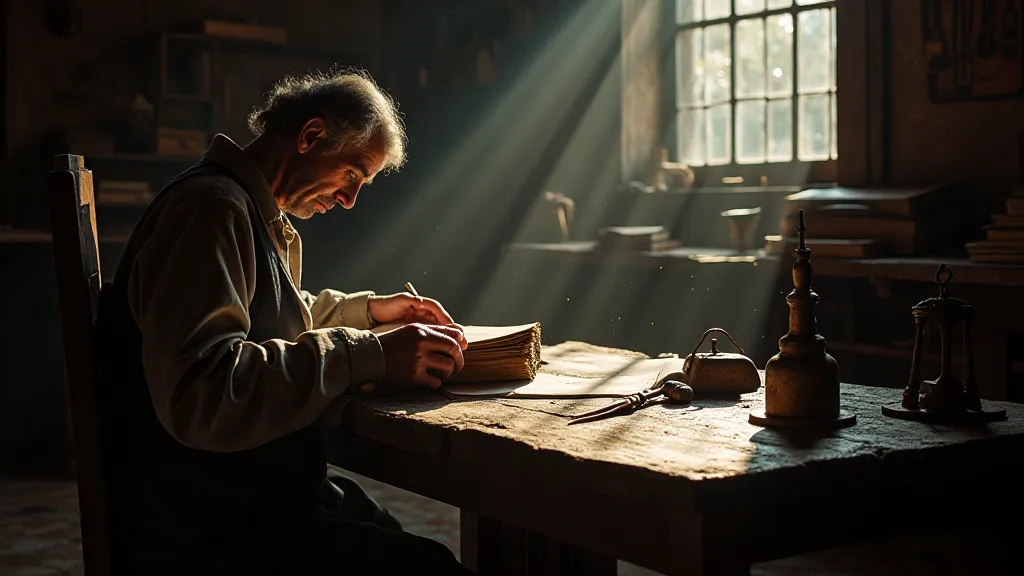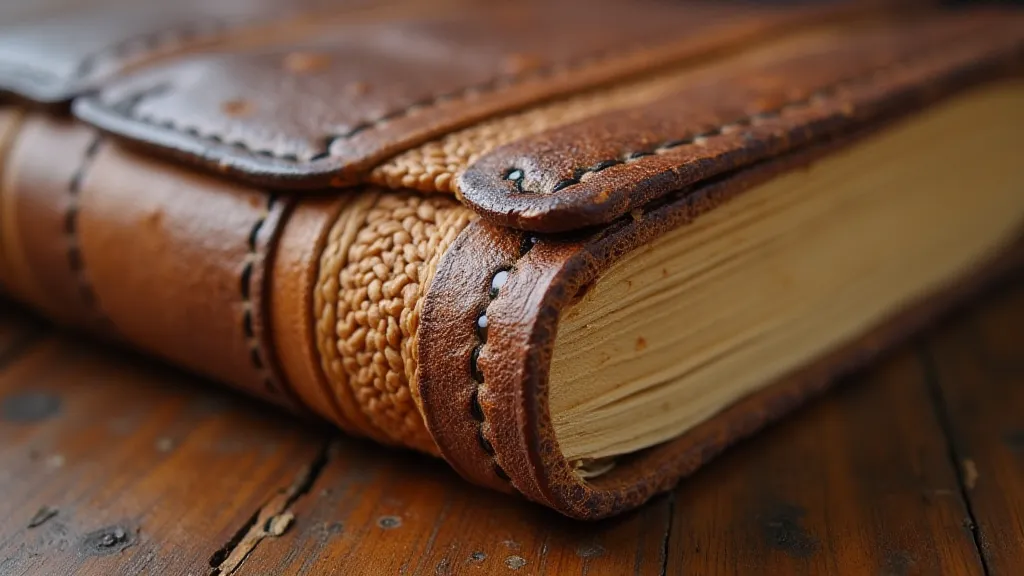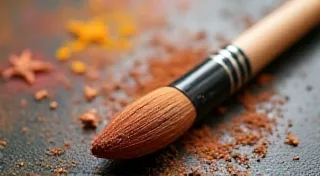Echoes of the Guild: Reconnecting with Historical Binding Methodologies
There’s a particular scent that clings to old books—a blend of aged paper, leather, and the subtle ghost of ink. For me, it evokes more than just nostalgia; it whispers of workshops filled with focused artisans, the rhythmic tap of tools, and the quiet dedication to preserving knowledge. We often think of historical bookbinding as a monolithic process, but in reality, it was a landscape of innovation, regional specialties, and evolving techniques. Modern bookbinding, while efficient, sometimes loses the soul woven into those earlier methods—the human touch, the ingenious problem-solving, the sheer artistry. Let's journey back and explore some less-common historical binding methodologies, appreciating the skills and creativity of those who came before.

Beyond the Double-Line Stitch: The Case Binding of Europe
The familiar double-line stitch, often the first one learned by modern bookbinders, is a descendant of centuries of refinement. But before it solidified as a standard, numerous variations existed. Take, for instance, the intricate case bindings popular in 17th and 18th century Europe. These weren't simply glued constructions. They involved a complex system of sewing the text block to raised bands affixed to the spine, which were then covered with leather boards. These boards weren't just protection; they were often adorned with tooling, creating stunning visual effects. The skill lay not only in the sewing, but in the precision required to align the bands and the artistry in the leather decoration. The selection of leather wasn't merely aesthetic; it dictated the tooling techniques and the overall lifespan of the book. Understanding how to prepare and treat these materials—how to soften leather—was a critical skill passed down through generations. It’s a legacy that extends beyond simple binding, influencing the broader world of leatherworking traditions.
I remember the first time I encountered a truly antique case binding. The subtle give of the leather, the slight distortion of the spine from centuries of handling—it felt less like holding a book and more like holding a piece of history. It made me realize that every imperfection wasn’t a flaw, but a mark of authenticity, a testament to its journey through time. Restoration attempts on these bindings are particularly delicate. You're not just repairing a book; you're conserving a cultural artifact, trying to mimic the methods and materials used hundreds of years ago.
The Austrian Long Stitch: A Testament to Simplicity and Strength
Moving eastward, we find the Austrian Long Stitch. This technique, seemingly straightforward, demonstrates a beautiful application of efficiency and structural integrity. Unlike the more convoluted sewing patterns of some other European traditions, the Austrian Long Stitch utilizes a relatively small number of long stitches that extend from the spine of the text block directly through the cover. While it might appear less ornate, it’s incredibly strong—a key factor in preserving books that would be handled frequently. The genius lies in its simplicity; minimal thread used, maximum strength achieved. The choice of materials played a significant role in the longevity of these bindings, influencing not only the structural integrity but also the aesthetic appeal.
The appeal of this stitch lies partly in its adaptability. It works well with various cover materials, from thick leather to more flexible parchment. It also allows for a less restrictive spine, allowing the book to lie flatter. When I experiment with this stitch myself, I'm always struck by its elegance. It’s a reminder that the most effective solutions are often the most unassuming. The traditions surrounding the processing of hides, transforming raw materials into durable and beautiful covers, form a fascinating study in themselves. For those who like to create their own bindings, personal notebooks offer a wonderful and tangible connection to this artform.
The Coptic Binding: An Ancient Echo of Egyptian Craftsmanship
Venture further back in time, and we find the Coptic binding—a technique that originated in ancient Egypt and continued to be practiced for centuries. This method stands out for its exposed spine, creating a chain-stitched pattern that is both functional and visually striking. The text block is sewn directly to the cover using a series of open stitches, revealing the intricate network of thread that holds the book together. It’s a far cry from the hidden stitching of modern bindings.
The beauty of the Coptic binding lies in its honesty. There's no attempt to conceal the method of construction; it's presented openly and proudly. The open spine also provides greater flexibility, allowing the book to lie flat. Reproducing this binding requires a meticulous approach. The precision of the stitch, the careful alignment of the cover—it demands a deep understanding of the materials and techniques involved. The raw, almost primitive aesthetic of a Coptic binding is powerfully evocative. It whispers of monastic scriptoria and the preservation of sacred texts. Imagine the dedication required to meticulously prepare the hides used in these bindings, ensuring their longevity and beauty – a process intimately connected to the creation of these enduring works of art.

Materials Matter: Parchment, Vellum, and the Language of Leather
Historical bookbinding wasn’t just about stitches; it was fundamentally tied to the available materials. Parchment and vellum, made from animal skin, were common alternatives to paper, offering greater durability and a unique texture. Leather, of course, was the material of choice for covers, valued for its strength and beauty. Different types of leather—goat, calf, sheep—each possessed its own characteristics, influencing the binding process. The knowledge of transforming raw animal hides into supple parchment and durable leather was a guarded secret, passed down through generations of artisans. It demanded an understanding of chemistry, biology, and a profound respect for the natural world. Understanding the nuances of these ancient techniques allows one to truly appreciate parchment whispers, the stories held within the material itself.
The scarcity of these materials also fostered a culture of resourcefulness. Scraps of leather were often repurposed for smaller bindings or decorative elements. The understanding of how to prepare and treat these materials—how to soften leather, how to prepare parchment—was a critical skill passed down through generations of binders. Today, when attempting historical reproductions, accurately sourcing these materials is paramount. Modern “leather” often lacks the properties of traditional hides, and synthetic parchment simply cannot replicate the unique qualities of the authentic article. The skill wasn’t simply in the creation of the finished product, but in the skillful management and utilization of every part of the raw materials, minimizing waste and maximizing value.
Collecting and Conservation: A Respectful Appreciation
For those interested in historical bindings, whether as collectors or conservators, a deep appreciation for these methodologies is essential. A true collector doesn’t simply admire the finished product; they seek to understand the process, the skill, and the history behind it. Similarly, a conservator must approach their work with a reverence for the original techniques, striving to repair and stabilize the binding while minimizing intervention. The challenge lies not only in preserving the physical structure of the binding but also in maintaining its historical context and the story it tells.
The fragility of these historical artifacts underscores the importance of ethical collecting and responsible conservation practices. Rather than focusing on pristine condition, the goal should be to preserve the binding's integrity, respecting the marks of time and the evidence of its journey. Each crack, each faded tool mark, tells a story—a story of the artisan who created it and the hands that have held it over the centuries. For many, creating something beautiful and enduring becomes a form of personal reflection, a way to connect with tradition and express creativity – a sentiment often explored in the creation of personal notebooks.

The Legacy Continues
Reconnecting with these historical binding methodologies isn’t just about recreating the past; it’s about enriching the present. By understanding the ingenuity and skill of past artisans, we can gain a deeper appreciation for the craft of bookbinding and inspire new approaches to contemporary design. The echoes of the guild still resonate – a reminder that true craftsmanship is a blend of technical skill, artistic vision, and a profound respect for the materials and the history they represent. The pursuit of excellence in these techniques isn't just about preserving the past; it's about innovating for the future, finding new ways to combine traditional knowledge with contemporary aesthetics.





